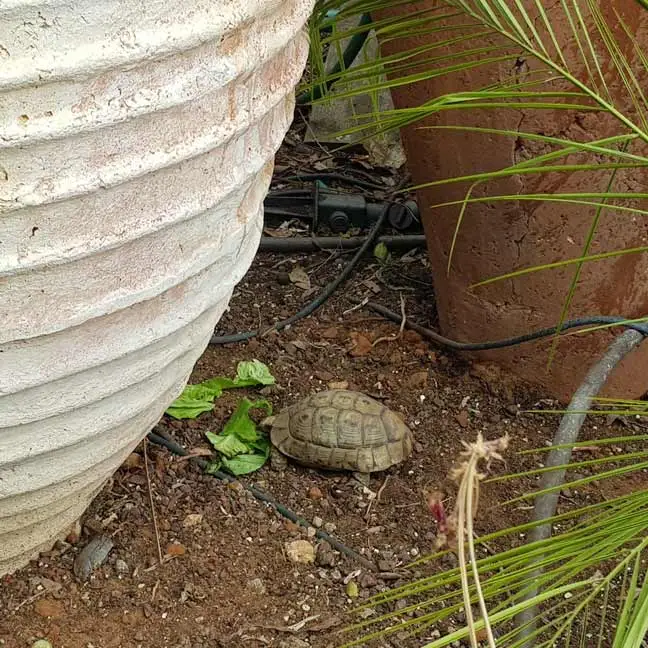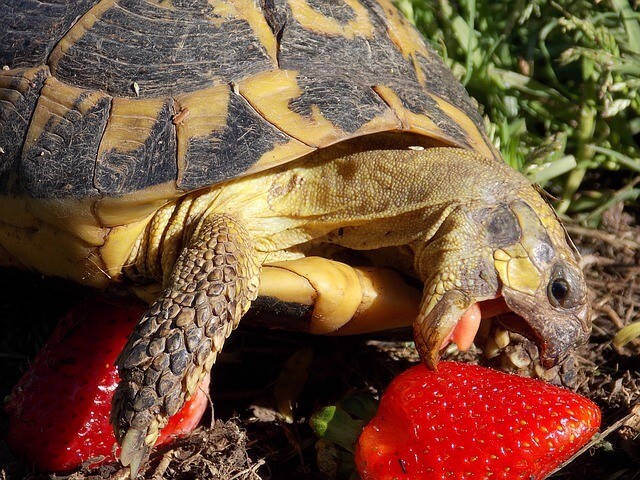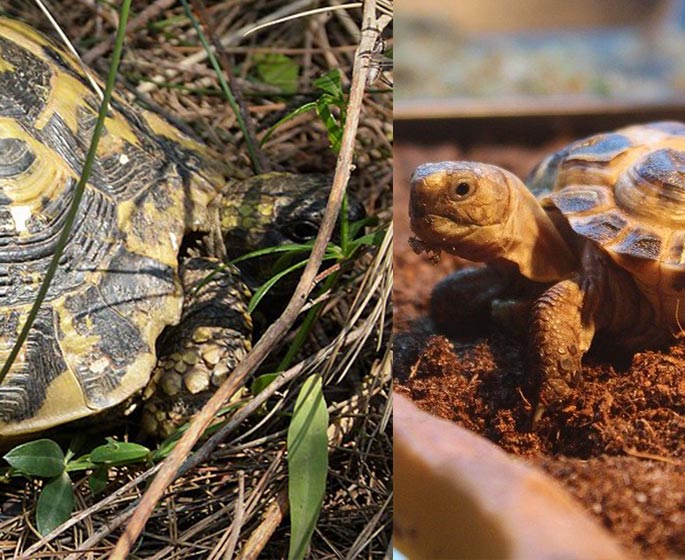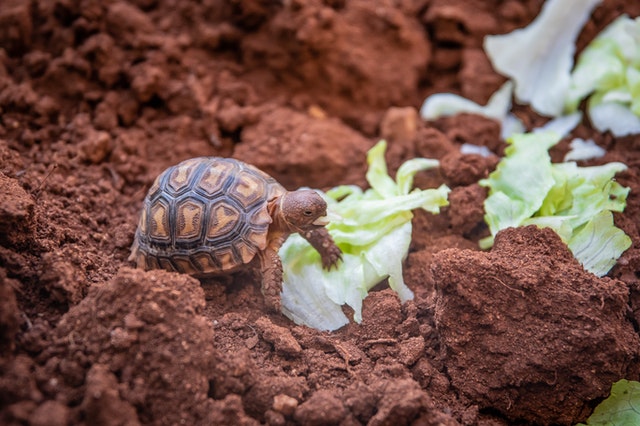If you are planning to take care of a tortoise as a pet but can’t decide between a Greek and Russian tortoise, we are here to help you.
There are two common species of the Mediterranean tortoise: Greek and Russian tortoises. They are well-known in the pet market because of their small size. Considering their almost similar features, many of you might be confused about which is which. But if you are aware of the smallest differences they have, you can differentiate Greek tortoises from Russian tortoises.
One of the adorable things about these two species of tortoises is their ability to survive in the ever-changing environmental conditions. Their ability to adapt to certain weather conditions played a great role in their survival.
These reptiles are widely available in almost every corner of the world. In line with that, they caught the attention of many, especially the scientists
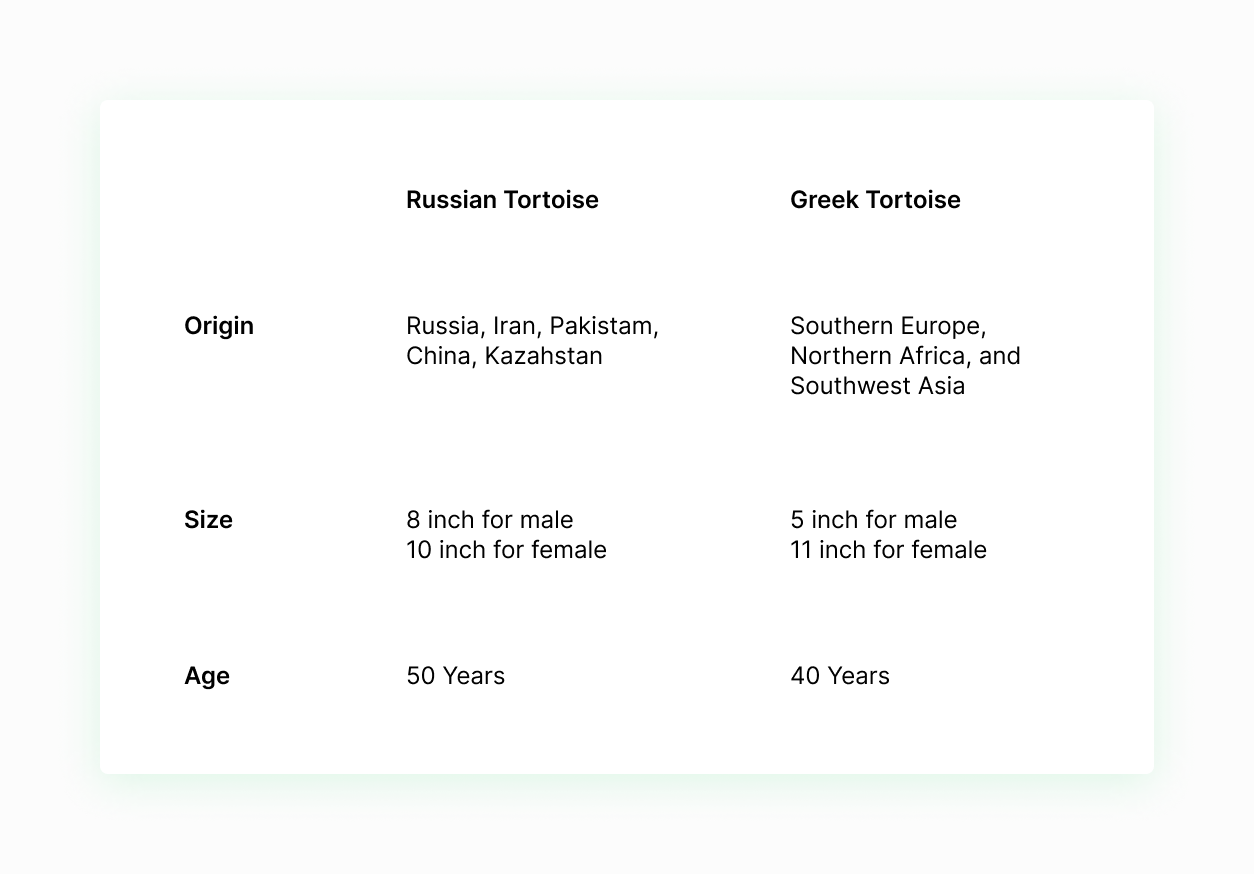
In today’s age, it is no surprise when we find a tortoise inside our friend’s home. Many homeowners around the world consider tortoises as pets. It is amazing how these reptiles that wandered the wild for several years are now being taken care of by humans.
One of the reasons why tortoises became one of the favorite pets of many is their non-aggressive and gentle nature. Aside from that, they have a mysterious ability that helped them survive throughout the years that captured the heart of homeowners.
Although the reasons behind their popularity these days are still uncertain, we can say that these reptiles will become more popular as the years go on. In line with that, you must determine the differences and similarities of Russian and Greek tortoises in different aspects.
If this is your first time dealing with tortoises, you may be wondering which you should select between a Greek and Russian tortoise. To help you further, we have made a list of their differences and similarities below.
Russian Tortoise
The Russian tortoise is known for its scientific name Testudo Horsfield is a species of tortoise under the Reptilia class. Russian tortoises are popular with different names, such as four-toed tortoise, Afghanistan tortoise, Steppe tortoise, Central Asian tortoise, and Horsfields’ tortoise.
Origin and History
The first group of Russian tortoises originated in southern Russia, Iran, Pakistan, China, Kazakhstan, the Caspian Sea, and Afghanistan. It is believed that the Russian tortoises were initially found in some parts of Asian countries.
We all know that Asian countries have harsh climates, including cold winter and very dry summer months. Amazingly, these species withstand extreme temperatures for several years, which made them popular for their ability to adapt to any climate.
Size
When it comes to their size, you may notice that male Russian tortoises are relatively smaller than their female counterparts. The large size of female tortoises only shows their ability to accommodate a high number of eggs.
Full-grown female Russian tortoises can grow up to 10 inches long. A hatchling female Russian tortoise can grow at least one inch longer than its average size. On the other hand, the average size of male Russian tortoises is only 8 inches long.
Age
When buying tortoises to be your pet, the most important thing you should keep in mind is their lifespan. To ensure that your pet will be with you for long years, make sure to take care of them in a conducive environment. A well-cared Russian tortoise can live for up to 40 years old.
What Makes Russian Tortoises Popular?
There are lots of reasons that made Russian tortoises adored and patronized by many pet lovers around the world. Aside from being small, Russian tortoises are also popular because of their rugged lifestyle and longer lifespan.
Breeding
Mating happens when the male Russian tortoise shows interest in the female. They tend to make advances such as circling the female, robbing its head, and even biting the female’s front legs. At first, a female Russian tortoise shows no interest. But after several hours of making advances, mating will occur.
A single mating period can fertilize up to 30 eggs. After the gestation period, the female Russian tortoise will find a place where she can lay the fertilized eggs.
Greek Tortoise
Testudo graeca is the scientific name of Greek tortoises, and they belonged to the family Testudinidae and class reptilia. They are popular under the names of common tortoises, Moorish tortoises, and Spur-thigh tortoises.
Origin and History
For several decades, the groups of Greek tortoises were imported in different countries, including Southern Spain, the Middle East, East Europe, and Northern Africa. They easily captured the hearts and attention of many people because of their ability to adapt to different niches quickly.
Aside from the four countries mentioned above, Greek tortoises were also found in Southwest Asia, They can be found usually in areas with rocky hillsides, meadows, fields, forests, and scrubs.
Size
The average size of a fully grown adult male and female Greek tortoise is between five inches to eight inches. There are some rare instances where Greek tortoises can grow up to 11 inches. A hatchling Greek tortoise could grow at least one inch longer than its normal size. Considering their manageable size, they are more popular compared to Russian tortoises.
Age
Compared to Russian tortoises, Greek tortoises have a longer lifespan of up to 50 years. Some experts believe that their longer lifespan is affected by their manageable size. Greek tortoises are easy-going pets. If you meet their diverse diet needs and take care of them properly, they can live up to more than their expected life expectancy.
What Makes Greek Tortoise Popular?
Aside from their compact size and easy-going nature, Greek tortoises are popular since they are easy to maintain and they are relatively inexpensive. If you have basic knowledge about tortoises, you probably know how expensive they are. So, if you have a limited budget but want to pet a tortoise, owning a Greek tortoise could be the best option.
Breeding
After the hibernation period, which happens during the winter months, the female Greek tortoises become more receptive. Moreover, the male Greek tortoise will start ramming the female’s shells. Similar to the Russian tortoises, a single mating can fertilize several eggs.
After the mating, female Greek tortoises will become more aggressive before they lay their eggs. To ensure that the fertilized eggs are protected against predators, the female tortoise will find a safe place before laying the eggs and covering them with sand.
Similarities of Greek Tortoise and Russian Tortoise
Now that you know the differences between a Russian and Greek tortoise, it’s time to move on to their similarities.
Diet
The Greek and Russian tortoises have the same diet. The diet of the two tortoise species consists of succulent and herbaceous vegetation, which includes some types of fruits, flowers, twigs, and grasses. They also need watery-like dishes to maintain their hydration.
Characteristics and Personality
There are lots of things you will love about the personality of Russian and Greek tortoises. Both species are more active during the daytime. Aside from that, their gentle characteristics are very noticeable when mingling with others. The only problem between these two is that they become more aggressive during the mating season.
Russian and Greek tortoises are good climbers and borrowers. Both of them are also adaptive to various changes in the environment.
Can Greek and Russian Tortoises Live Together?
Most of you who can’t decide between Russian and Greek tortoises may be planning to take care of the two. This is also possible as long as they are not in the same area.
Mixing tortoises in different species is not recommended for different reasons. First, there is a possibility for one tortoise to attack the other, especially when one is bigger than the other.
Aside from that, mixing two or more tortoise species in captivity for a longer period can cause transmission of infections and diseases. Transmission of infections is highly notable, especially if the tortoises are kept in a poorly ventilated area.
Conclusion
To sum up, it is very evident that Greek and Russian tortoises are one of the favorite pets of most homeowners around the world because of their delicate nature. Aside from that, compared to your fur babies, pet tortoises do not shed, and they look very cute, especially when hatchling.
Another thing you will love about pet tortoises, especially the Russian and Greek species, is that they can live longer than other common pets. In fact, some species of tortoises can live up to 100 years old. Thus, when you decide to take care of either Russian or Greek tortoises, make sure that you can provide them with the right care until the end.
If you ask us which tortoise species we will choose between Greek and Russian tortoises, we highly recommend the Greek ones. This is because of their manageable size and easy-going nature. Aside from that, they are docile and can adapt to different situations easily.
No matter what your choice, both species of tortoises can give you so much love and lifetime happiness.



